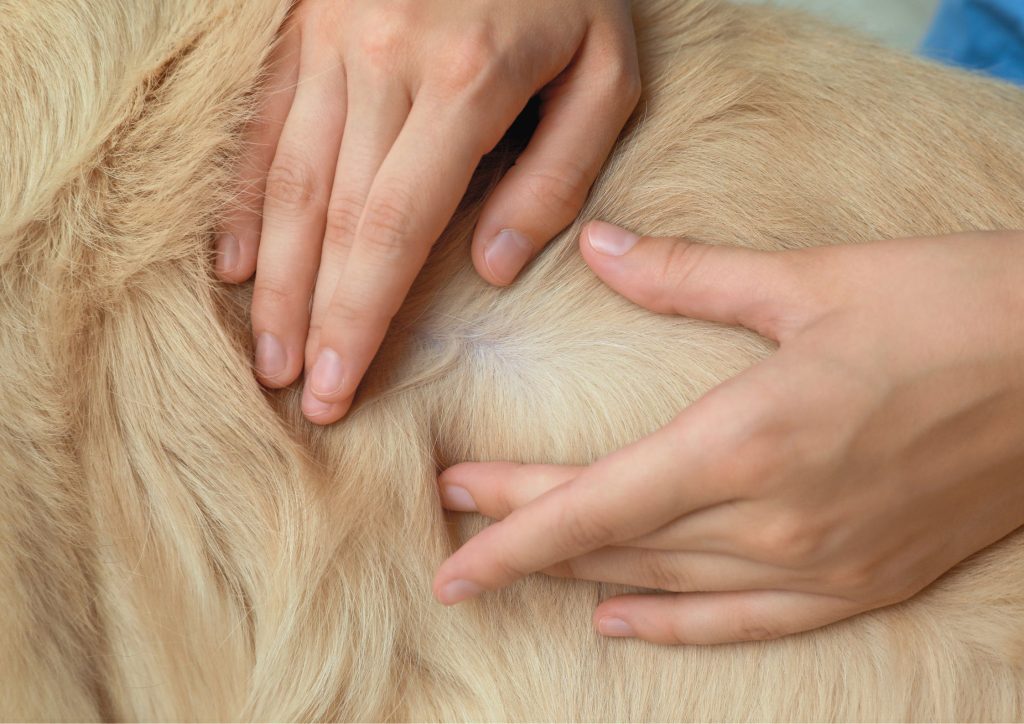Paralysis ticks pose a significant risk to your furry family members, making it important to understand everything you can about them to protect your dogs and cats from bites. In general, tick bites are more serious for dogs than cats.
With tick season fast upon us (from September to March), now is the best time to read up on all you can about ticks, what they are, where they are found, the symptoms of a tick bite and how to protect your furry family members.
What Are Ticks?
Australian paralysis ticks (Ixodes holocyclus) and Southern Paralysis Ticks (Ixodes cornuatus) are found along the eastern coast of Australia (Queensland, Victoria, New South Wales, and Tasmania). They are primarily found in bushland and coastal areas.
When the paralysis tick bites a dog or cat, it injects a neurotoxin that causes progressive paralysis. If left untreated, this toxin will eventually cause the paralysis and death of your beloved pet.
How to Spot a Tick
Ticks look like a brownish or greyish lump on a dog’s or cat’s fur. If it is filled with blood, it may appear more blue or a light grey colour and increase in size. Once attached to an animal, they firmly embed themselves in the skin. If you feel a small lump on your pet’s skin, it could be a tick.
It is vital to check your pets for signs of ticks during the warmer months and after they have been outdoors. Ticks are drawn to warm and soft areas of your pet’s body, so it’s crucial to check the following areas:
- Head: Check your dog or cat’s face, including their ears, lips and nose.
- Neck and shoulders: Remove your pet’s collar to check behind the ears and along the neck.
- Legs: Check all four legs, including the back and front and their paws.
- Underbelly: Check your pet’s belly.
- Tail: Check the entire tail, including both sides and the tip of the tail.
- Armpits and chest: Keep an eye on your pet’s underarms and the chest area.
- Tick crater: Even if the tick is no longer present on your pet, there will be a swollen, raised area around the bite site.
Symptoms of Tick Bites
The symptoms of tick bites include:
For Dogs:
- Gagging
- Vomiting (sometimes with froth)
- A bark that sounds weird/unusual
- Coughing
- Change in appetite (not eating)
- Difficulty in breathing
- Excessive drooling
- Progressive paralysis
- Swelling at the bite site
For Cats:
- More agitation
- Unusual breathing
- Gagging
- Changes to meows
- Salivation
- Decreased appetite
- Weakness
- Difficulty with walking or standing
- Swelling at the bite site
How to Remove the Tick
If you spot a tick on your dog or cat, it is best to act immediately. Use tweezers, a tick remover or your thumb and forefinger to grip the tick as tightly as possible and pull hard to remove the tick from your pet’s skin.
Once you free the tick, it is recommended that you keep it for identification and contact your vet.
Tick Treatment
The treatment depends on how serious your pet’s symptoms are. The most common course of treatment for paralysis ticks is to administer antitoxins and fluids through an IV.
If the tick is found quickly, most dogs and cats make a full recovery after treatment. In more serious cases, they may need to be put on a ventilator and, sadly, might not survive.
How to Prevent Tick Bites
Protect your furry family members from nasty tick bites by doing the following:
Tick Preventative Products: Multiple tick preventative products can be given to your dog and cat. These include:
- Chews from brands like Bravecto, Nexgard and Simparica.
- Tick collars
- Spot-on treatments from brands including Frontline Plus and Bravecto.
- Careful grooming: Groom your pet often. Keeping their fur coat short and neat will make it easier to spot any ticks.
- Avoid high-risk areas: During spring and summer, avoid bushland, long grass and coastal areas.
- Walk on paths: When taking your dog for a walk, make sure you stick to clear footpaths, instead of wandering into long grass or unmarked bushland.
- Check your pet: Check your dog or cat thoroughly after they have been outdoors.
Remember, early discovery and intervention are key to your pet making a full recovery! Even if you’re not 100% sure your pet has been bitten by a tick, it’s best to still double-check with your pet’s vet to be on the safe side.
At Potiki, we understand how precious your pets are. We also know that the unexpected can happen at any time, resulting in extremely high vet fees. These unforeseen circumstances are why it is best to be prepared with pet insurance. Potiki offer our customers flexible covers with excess and extras to give you and your family peace of mind. Visit our website to obtain a quick quote and explore our various coverage options.
FAQ
Yes, tick bites are covered by pet insurance under the ‘Accident and Illness’ cover or Comprehensive policies.
Make sure you check your policy, as coverage differs between each insurer and policy.
Yes, ticks can definitely bite humans. But they are more likely to bite humans directly than spread from pet to human.
Keep the grass cut and neat, and trim any wild, overgrown bushes.
It depends on the age of the tick and whether it is engorged with blood. When ticks are filled with blood, they can grow as big as a fingernail.
It takes around five days for the toxin of the paralysis tick to kick in. However, symptoms begin to appear about two days after the tick bites your pet.
If you notice a tick on your pet or suspect that they have been bitten, do not hesitate to contact the vet.


